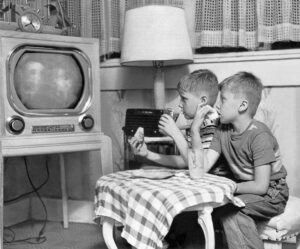A new YouGov survey found that during a typical dinner:
- 41 percent of respondents talk to people they’re with
- 63 percent watch television
- 28 percent look at their phone
- 16 percent listen to music or podcasts
- 8 percent read
- 6 percent play video games
Dinner seems to be falling apart.
Less than half of the people who eat dinner with another person speak to that person.
This is often referred to as “the dining dead.” Appropriately so.
Also, a whopping 63 percent of people watch television as they eat, and another 28 percent stare at their phones, which is likely worse than TV in so many ways. Some of those percentages probably overlap, meaning a certain segment of Americans are eating, watching TV, and staring at their phones while remaining silent to the person sitting across from them.
The perfect scene for some dystopian nightmare.
Or maybe you think that a majority of Americans staring at screens while remaining silent to their dinner companions isn’t a terrible thing at all. Perhaps this is a perfectly acceptable and even admirable way to spend time with friends and family and food.
Maybe you’re exceedingly happy living in what appears to me as a bleak, post-apocalyptic hellscape.
Of course, mountains of research would seem to indicate otherwise. Data suggests that family mealtimes without screens lead to improved physical and mental health and greater academic performance for children.
Then again, these findings are correlative and not causal. Maybe some other factors are at play.
More importantly:
Maybe all of this data on family meal time is a significant improvement from a decade ago. As disastrous as these numbers appear (at least to me), they may be trending in a positive direction.
Getting better every day.
That’s the tricky thing about statistics:
Without historical context, they only tell you where you are.
Not where you’re going.









